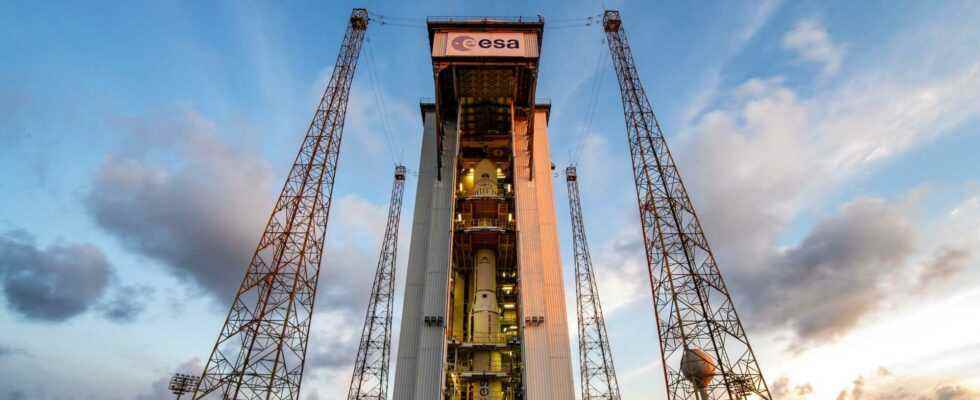The European Vega-C launcher has succeeded in placing scientific objects in orbit after a successful launch.
The Vega-C rocket, a more powerful evolution of Vega, carried out on Wednesday with its success, its inaugural launch from the Kourou space base, in French Guiana, placing several scientific loads in orbit at an altitude of 5,800 km.
The European launcher, under Italian prime contractor, rose above the launch pad at 1:13 p.m. GMT, quickly piercing the thick cloud cover above the Guyanese jungle, according to the live broadcast of the European Space Agency (ESA), program manager.
To read: Successful maiden flight for #VegaC https://t.co/9IIAHirDyV
The mission #VV21 took approximately 2 hrs 15 mins from liftoff to final payload release and final ignition of the upper stage AVUM+ engine.
Congratulations to all our partners! pic.twitter.com/UKNgpHa3wl
— ESA France (@ESA_fr) July 13, 2022
“Nominal trajectory, calm piloting, normal onboard parameters,” the operations manager announced as the rocket rose into the sky. Two hours and ten minutes later, the fourth stage of the launcher released at an altitude of 5,800 kilometers several scientific loads developed by universities, which found free space on board because it is a qualification flight of the rocket. . In addition to four “cubesats” weighing a few kilograms, these included LARES-2, a 300 kg metallic sphere used to study the effect of gravity in orbit.
This deployment marked the end of the mission, triggering cries of joy in the Jupiter control room where the launch was supervised. The launch took place two hours late, the countdown having been interrupted twice less than two minutes before takeoff for technical checks after anomalies were reported.
Vega-C, C for “consolidation” according to its industrial prime contractor, the Italian Avio, is an improved version of the Vega light launcher, fired 20 times (with two failures) since 2012. With 35 m in height, Vega -C is a little bigger and wider than Vega and can put into polar reference orbit at 700 km altitude up to 2.2 tons of satellites, compared to 1.5 tons for Vega. With its increased performance, Vega-C can address 90% of the market for satellites in low orbit at a few hundred kilometers altitude, compared to half for Vega, according to Avio.
Ariane 6’s little sister
This light launcher is considered the little sister of Ariane 6. The two programs were launched in 2014. Vega-C will be able to carry out some of the missions previously assigned to the medium Russian Soyuz launcher. The latter was, until the invasion of Ukraine by Russia, also marketed by Arianespace and fired from Kourou.
The first stage of Vega-C, the P120C, is also used as a booster for Ariane 6, a rationalization allowing Europeans to develop a family of launchers that is more competitive against American competition. The fourth stage, the Avum+ module, can be reignited, making it possible to position the satellites in different orbits before de-orbiting itself so as not to leave any debris in space.
The war in Ukraine has raised fears of a break in the supply chain: the motors for Avum modules are manufactured in Dnipro, southeast of kyiv. But stocks of engines have been built up and the operation of Vega is “assured in the medium term”, according to Daniel Neuenschwander, director of space transport at ESA.
After this qualification shot, the Italian rocket’s manifesto includes nine launches (seven for Vega-C and two for Vega), according to Arianespace. ESA expects four to six launches per year. “We are going to use the data and return to flight as quickly as possible,” promised Daniel Neuenschwander, congratulating the teams from the Jupiter room.
Vega’s next flight is scheduled before the end of the year with a Vega-C rocket carrying Pleiades Neo Earth observation satellites, designed by Airbus. Twelve countries contribute to the Vega programme, led by Italy which provides 52% of the financial contributions.
